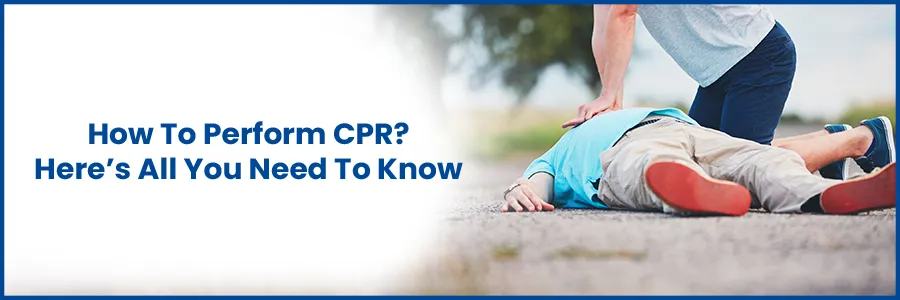How To Perform CPR? Here’s All You Need To Know

Cardiopulmonary Resuscitation, commonly known as CPR, is a life-saving technique that can significantly improve a person's chances of survival in a cardiac emergency. Whether you're a healthcare professional or a bystander, having the knowledge and skills to perform CPR can make a critical difference in saving someone's life. In this comprehensive guide, we'll walk you through the step-by-step process of performing CPR, the importance of early intervention, and some essential tips to keep in mind.
Why CPR Matters
CPR is a crucial technique used to maintain blood circulation and provide oxygen to vital organs when a person's heart has stopped beating or is not effectively pumping blood. This lack of circulation can occur due to various reasons, such as cardiac arrest, drowning, choking, or trauma. Immediate initiation of CPR can help sustain blood flow to the brain and other organs until professional medical assistance arrives.
-
Check the Scene Safety
Before you rush in to perform CPR, ensure the safety of the surrounding environment. Make sure there are no immediate dangers that could harm you or the victim. -
Assess Responsiveness
Gently tap the victim and shout loudly, "Are you okay?" If there is no response, the person is unresponsive, and you need to proceed to the next step. -
Call for Help
If there's someone else around, ask them to call emergency services immediately. If you're alone, call for help yourself before starting CPR. -
Open the Airway
Gently tilt the person's head back slightly to open the airway. This will help ensure that the person's breathing passage is clear. -
Check for Breathing
Place your ear close to the person's mouth and nose, and look for chest rise and fall. If the person is not breathing or only gasping, you need to start CPR. -
Begin Chest Compressions
Place the heel of your hand on the center of the person's chest (between the nipples). Place your other hand on top of the first hand, interlocking your fingers. Keep your elbows straight and your shoulders directly above your hands. Push down hard and fast, at least 2 inches deep and at a rate of 100-120 compressions per minute. -
Give Rescue Breaths
After 30 compressions, give two rescue breaths. Tilt the person's head back slightly again to open the airway. Pinch the person's nose shut and cover their mouth with yours, creating an airtight seal. Give a breath that causes the chest to rise visibly. Repeat this process for a total of two rescue breaths. -
Continue Compressions and Breaths
Alternate between 30 chest compressions and two rescue breaths. Continue this cycle until professional help arrives or the person starts breathing on their own.
Tips and Considerations
- Use an AED (Automated External Defibrillator): If an AED is available, use it as soon as possible. These devices can analyze the heart's rhythm and deliver an electric shock if needed, potentially restoring a normal heartbeat.
- Proper Compression Depth: It's essential to push down at least 2 inches deep during compressions. Using your body weight and not just your arm strength will ensure effective compressions.
- Minimize Interruptions: Try to avoid unnecessary interruptions during CPR. Consistent and uninterrupted chest compressions are vital for maintaining blood circulation.
- Switching Rescuers: If there's another trained individual available, switch roles every 2 minutes to prevent fatigue and maintain the quality of CPR.
- CPR for Infants and Children: The technique for performing CPR on infants and children is slightly different. Use two fingers for infants and the heel of one hand for children, and adjust the depth of compressions accordingly.
- Stay Calm: Performing CPR can be stressful, but it's crucial to remain as calm as possible. Remember that any attempt at CPR is better than no attempt at all.